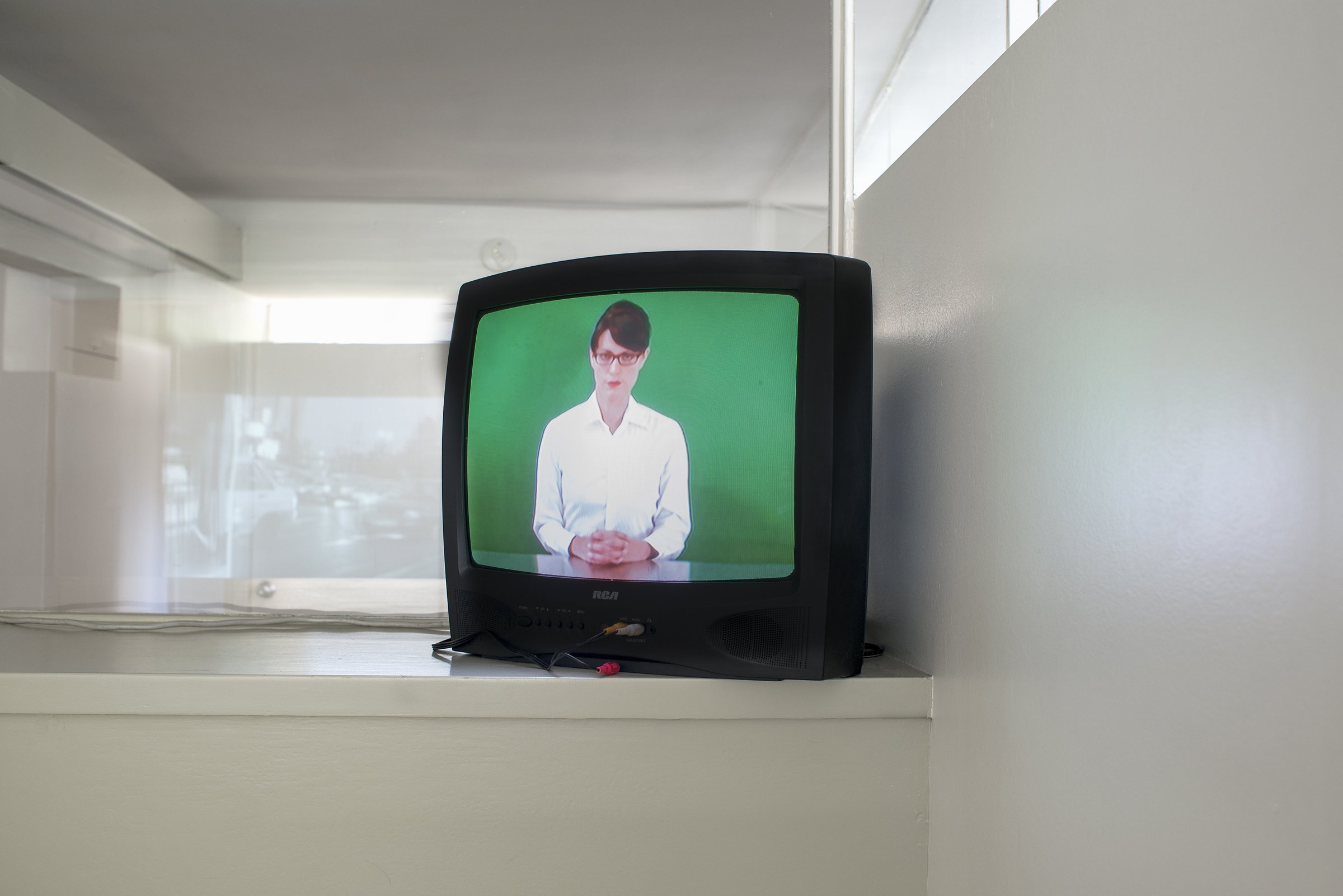Installation view of Final Projects: Group XXXVI - SMILE. Photography by Mark Escribano, 2013.
Artist Anahita Razmi, titled her project A Tale of Tehrangeles, modeling her construct after Charles Dickens’s A Tale of Two Cities. The term “Tehrangeles” is a common, informal moniker describing an immigrant population of some 700,000 to 800,000 people, the largest Iranian settlement outside Iran. Razmi presented a visual collage of the two cities, projected on two screens, in which territorial blurrings and spatial connections/disconnections/negations were created by combining and juxtaposing images shot in Los Angeles and Tehran. In addition to the video installation, she collected newspaper headlines that originally contained the words “Tehran” or “Los Angeles” and replaced each of these with the word “Tehrangeles,” thereby broaching issues of territorial attributes and histories.
Artist Benjamin Hirte presented two countering gestures, both highlighting reflections on privacy, monstrosity, cars, gardens, freeways, exclusivity, and meditation, in the apartment and garden he has occupied during his residency. His first project featured a large under-inflated jumper (of the type used for children’s parties), tropical in design and purposely oversized for the garden space. He also presented an artist’s book inspired by the stream-of-consciousness writing style of authors Lawrence Ferlinghetti and Richard Brautigan (both California based), and the weaving methods and forms of Navajo rugs.
Architect Julia Wieger’s publication and poster project, REHEARSALS MOVEMENTS ARCHIVES WAVES REGIONS HELL GARDENS OWNERSHIP CITIES PERMACULTURE COSMIC RETROFIT DESIGNS AGGREGATION AGENCY LOUD ORGANIZING PUBLIC MAPS BICYCLES, centered around Llano del Rio, the socialist colony that existed in the Mojave Desert from 1914-18. Working with archival materials, Wieger researched the social and political structures of the colony, as well as its pre-modernist built environment. She discussed the relationship between this historical example of a “failed” utopian experiment and contemporary urban issues in Los Angeles in conversations with Lois Arkin, founder of the Los Angeles Eco-Village; architect and researcher Liz Falletta; media and urban theorist Norman Klein; filmmaker and writer Mady Schutzman; architecture critic Mimi Zeiger; and artist and activist Robby Herbst. The project was produced in the low-cost methods of the Llano del Rio print shop.
The impact of water management on the landscape of the American Southwest was the topic of artist Katrin Hornek’s film Upstream. Tracing the lower Colorado River from the Grand Canyon until it peters out at the Mexican border, Hornek’s film reversed this flow. As if rewinding time and the contemporary doctrine of growth, the camera traveled upstream, from the American Canal through the Imperial Valley, Salton Sea, Hoover Dam, and more. Typically drained for irrigation, urban water supply, and electricity, the Colorado is here seen in both natural and technological guises of the sublime. Hornek’s views of cultural and natural landscapes were counterpointed with abstract and concrete soundscapes by Wilm Thoben. In her book project, Title Word on “Plastic*”, Los Angeles Public Library / Central Library, 1906-2014, Hornek presented a chronological documentation of the title pages of the 564 books in L.A.’s downtown library with the word “plastic” in their titles. As the decades of the 20th century have unfolded, titles have touched on mass production, war materials, multinational corporations, Tupperware, plastic surgery, plastic money, plastic art and recycling. These pages take on resonance from their setting, revealing a Los Angeles that is both a center for back-to-the-earth living and a key player in the heavy oil and plastics industries.











